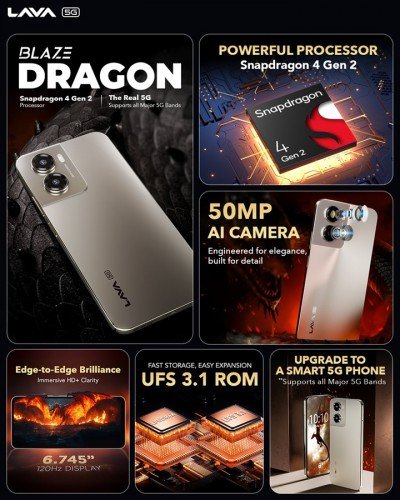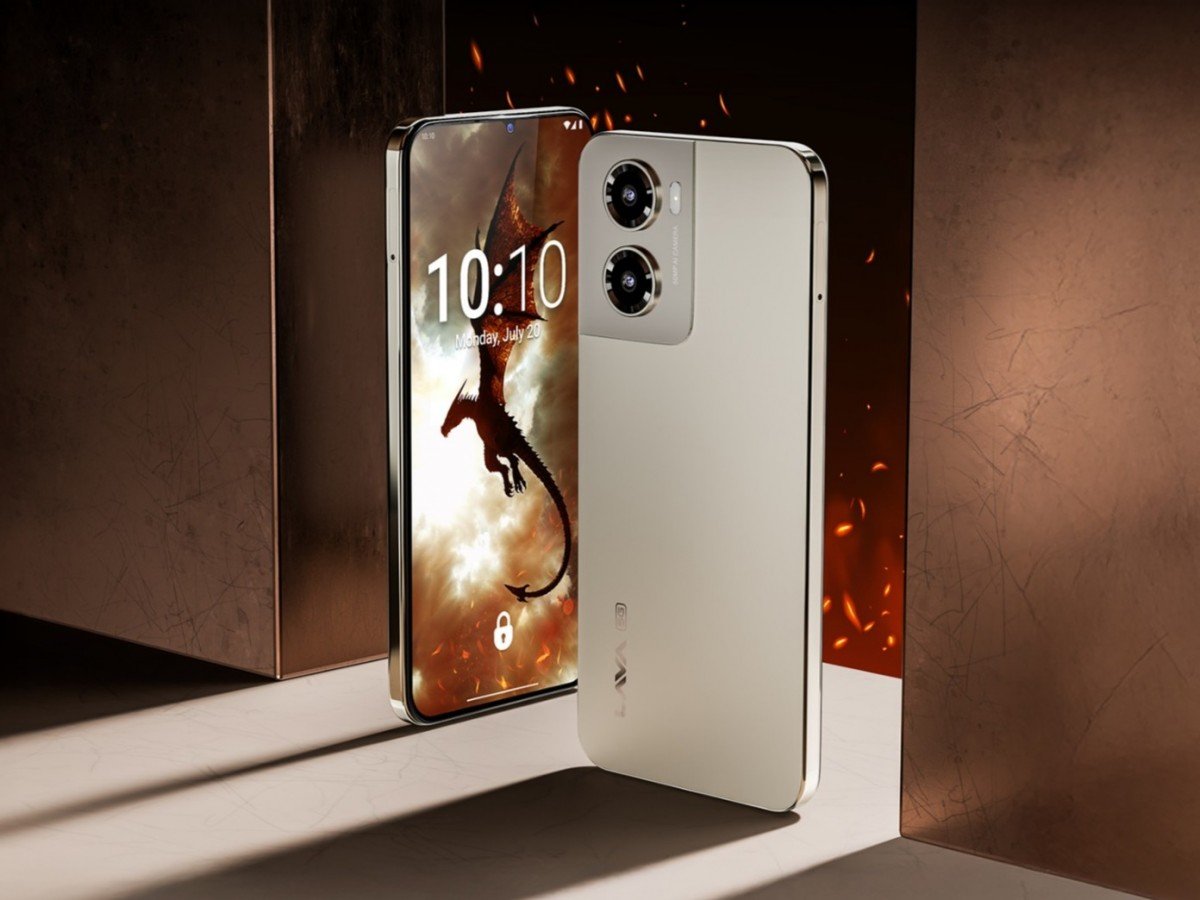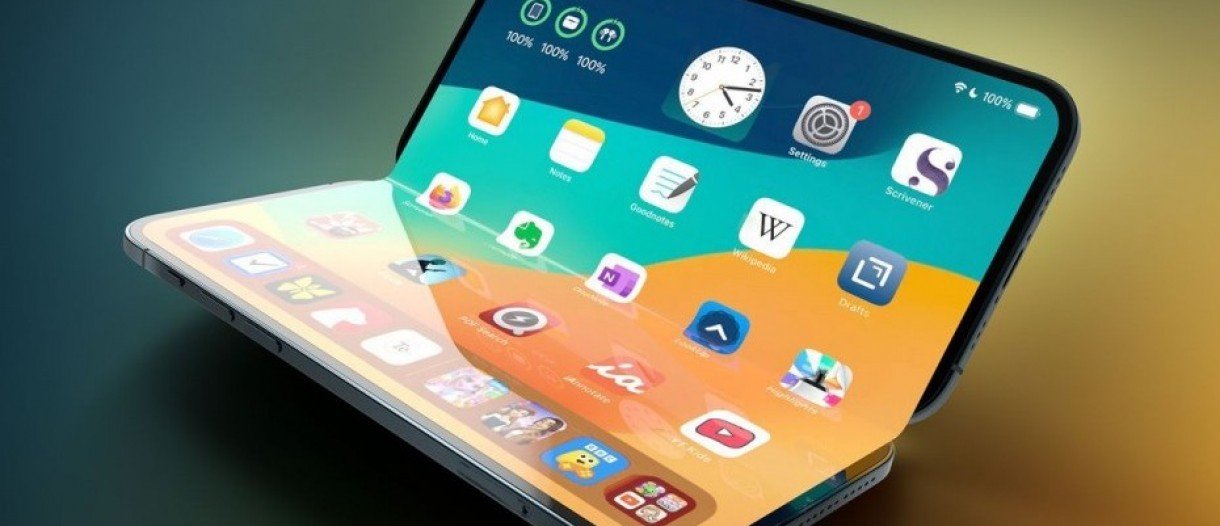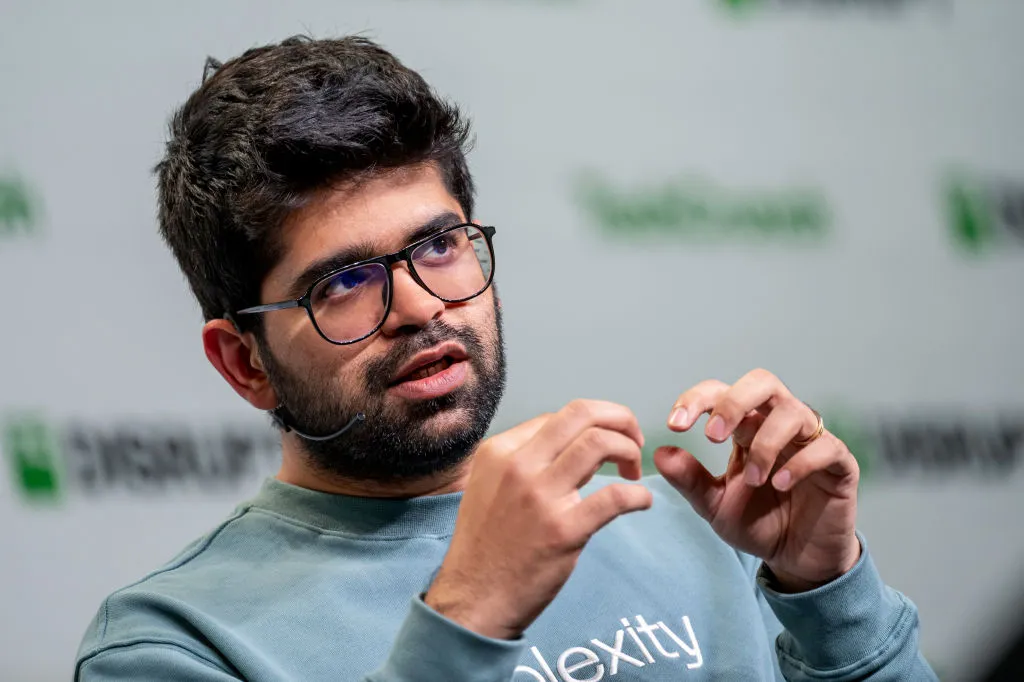Homegrown smartphone maker Lava has officially launched its new Blaze Dragon 5G in India, marking a significant milestone as the company’s first device featuring a Qualcomm Snapdragon chipset. Priced at ₹9,999 for the sole 4 GB RAM + 128 GB storage option, the phone brings notable specs including a large 6.74‑inch display, 5,000 mAh battery and stock Android 15 – all aimed at expanding Lava’s footprint in the ultra‑budget 5G segment.
Design & Display
The Blaze Dragon 5G sports a spacious 6.74‑inch HD+ LCD screen with a resolution of 720 × 1,612 pixels. A 120 Hz refresh rate and peak brightness exceeding 450 nits are included to ensure smoother animations and legibility outdoors. Lava opts for a clean aesthetic with minimal visual distractions, available in two color variants—Golden Mist and Midnight Mist.
Performance & Platform
Under the hood, the device is powered by the Snapdragon 4 Gen 2 SoC, built on a 4 nm process. This marks Lava’s first venture into Snapdragon territory, offering improved energy efficiency and moderate performance suited to daily tasks and light gaming. The phone includes 4 GB LPDDR4x RAM with up to 4 GB virtual RAM expansion, complemented by 128 GB UFS 3.1 storage and support for microSD up to 1 TB.
The Blaze Dragon runs stock Android 15, free of bloatware and UI skins, delivering a clean software experience. Lava promises one major Android upgrade (to Android 16) and two years of security updates, enhancing the device’s long‑term value.

Camera & Imaging
On the rear, the phone features a 50 MP primary AI‑assisted sensor paired with a 2 MP macro lens. The front camera is an 8 MP shooter, which supports selfies, video calls, and face unlock capabilities. Despite lacking a high‑end sensor, the AI assistance aims to enhance clarity and performance in typical lighting conditions.
Battery & Connectivity
Packing a 5,000 mAh battery, the Blaze Dragon supports 18 W fast wired charging via USB‑C. Lava claims this capability ensures dependable all‑day endurance for most users.
Connectivity includes 5G support across multiple Indian networks, dual‑SIM compatibility, dual‑band Wi‑Fi, Bluetooth 5.4, GPS with GLONASS and a 3.5 mm headphone jack for audio convenience. For security and usability, the phone includes a side‑mounted fingerprint sensor.
Pricing, Offers & Availability
With an official launch price of ₹9,999, Lava has sweetened the deal with an upfront ₹1,000 discount via partner banks during Amazon’s Great Freedom Festival, making the effective price ₹8,999. An additional ₹1,000 exchange bonus on any old smartphone (not limited to Lava) is also being offered on day one of sale.
Sales will begin from midnight on August 1, 2025, exclusively through Amazon India.
Why It Matters: Context & Positioning
The Blaze Dragon 5G targets users seeking premium features in an entry‑level 5G handset. At sub‑₹10,000 price, it brings together faster refresh rate display, Snapdragon chipset performance, flagship‑style storage technology, and long‑term software support. This positions it against rivals like Infinix Smart series and other sub‑₹10K 5G contenders.
Qualcomm’s Snapdragon inclusion is especially notable, signaling Lava’s intent to raise quality and credibility in the ultra‑budget segment. The clean Android interface, combined with future updates, makes this a compelling offering for affordability‑conscious yet tech‑aware buyers.
Pros & Cons at a Glance
Pros
- First Lava device with Snapdragon 4 Gen 2
- Smooth 120 Hz display
- Clean Android 15 experience, with upgrade guarantee
- Long battery life and fast charging
- Attractive first‑day pricing offers
Cons
- Modest camera configuration
- HD+ resolution in a large display
- RAM limited to 4 GB (real and virtual)
- No IP rating or high‑end haptics
Summary
Lava Blaze Dragon 5G represents a notable step for the brand, delivering Snapdragon performance, large fast display, robust battery, and clean Android OS, all while staying under ₹10,000. With introductory pricing and exchange discounts starting August 1, the phone is well‑suited for entry‑level 5G buyers, especially those upgrading from 4G devices or entering the smartphone ecosystem for the first time.
Photo Source: Lava




